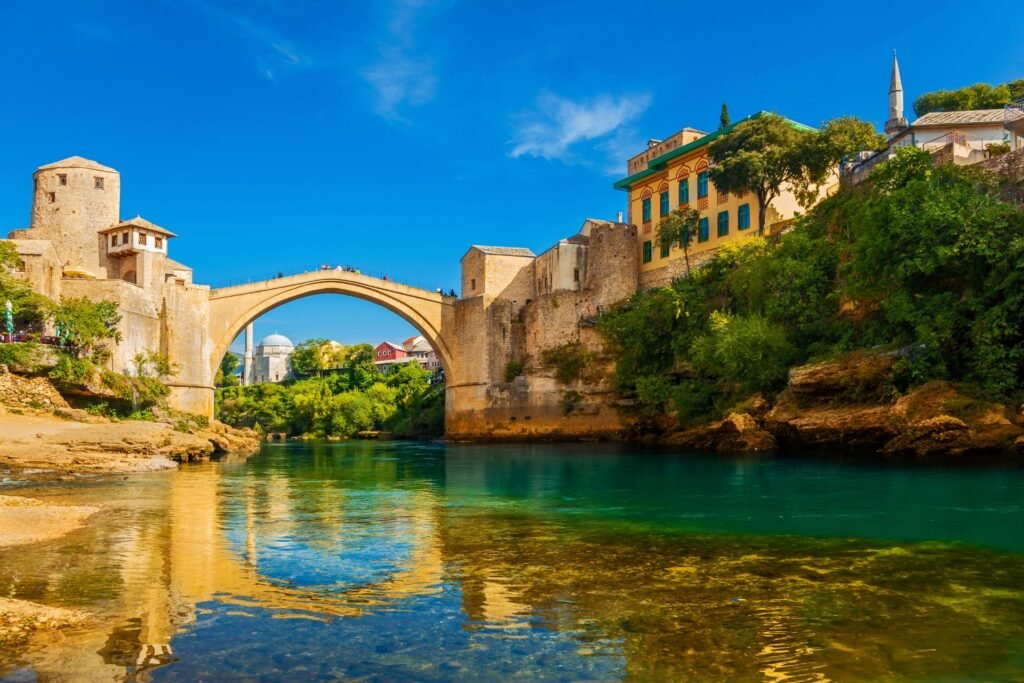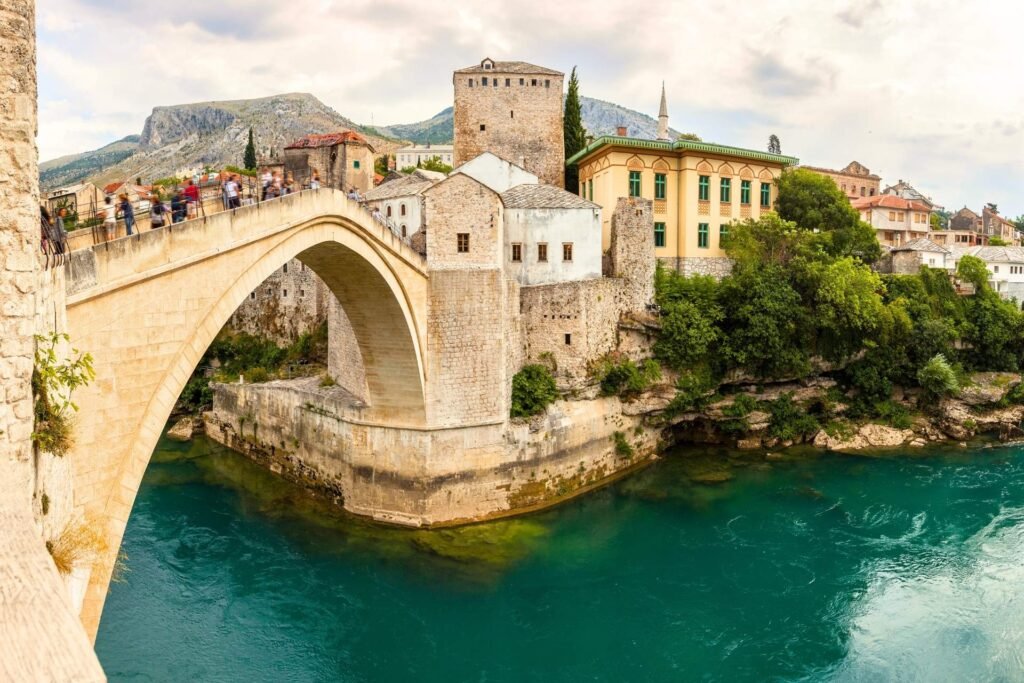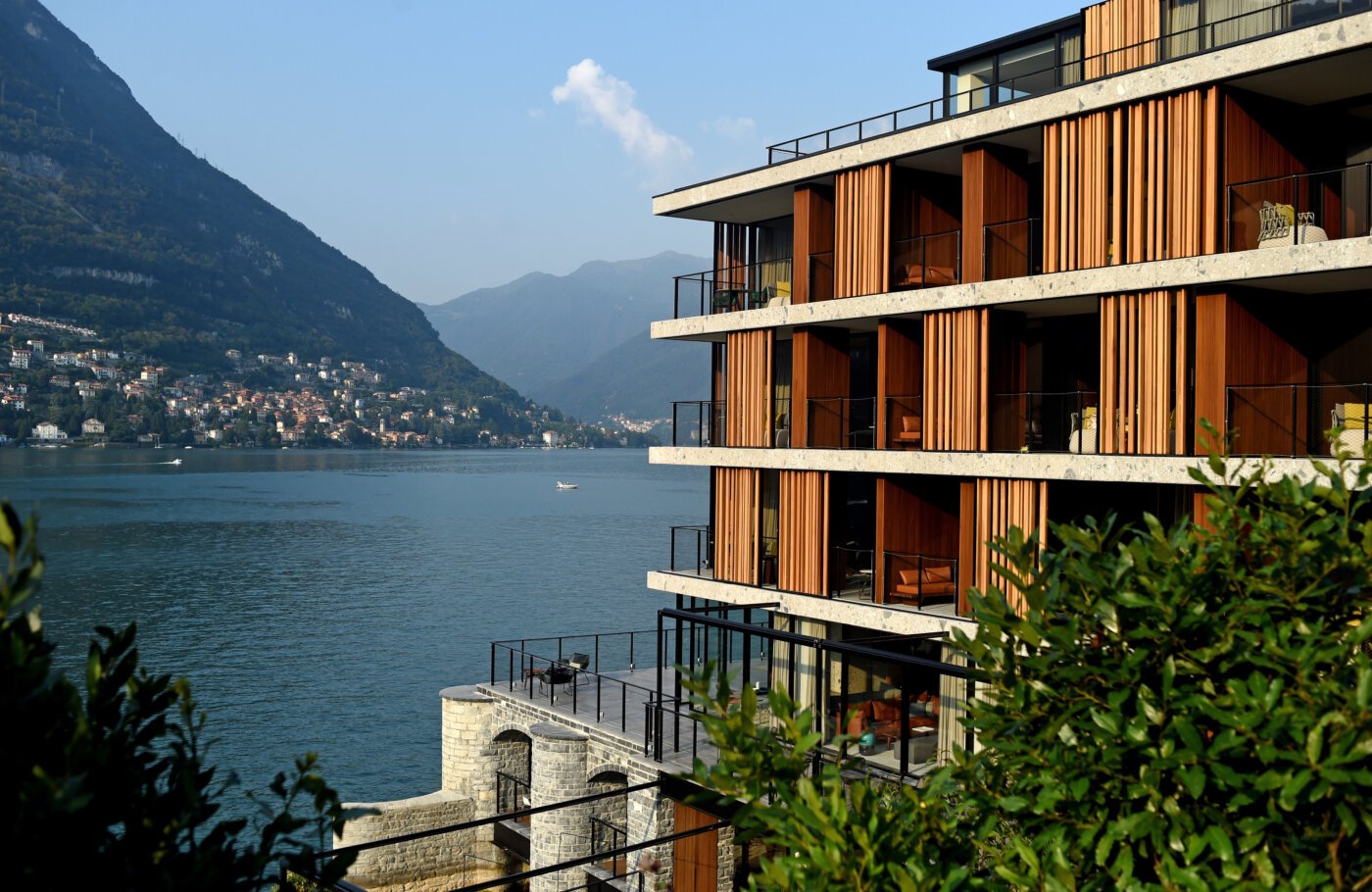The Soul of Mostar Restored Stone by Stone, Heart by Heart
Twenty years ago today, on July 23rd, 2004, something extraordinary happened. A bridge that had been reduced to rubble stood complete once more.
It wasn’t just any bridge rising from the waters—this was the resurrection of a city’s soul, accomplished through an unprecedented act of international cooperation and local determination.
The story of “Stari Most” (eng. Old Bridge) isn’t about limestone and mortar. It’s about what happens when humanity chooses to heal rather than go to war.
A 16th Century Engineering Feat
To understand the magnitude of what was lost and subsequently restored, we must first appreciate what Mimar Hayruddin created in 1566. The renowned Ottoman architect, a student of the celebrated Sinan, designed this replacement bridge at a cost of 300,000 silver coins. His choice of location was masterful—selecting the narrowest point of the Neretva River, with the most stable rocks on both banks.
The result was architectural poetry in stone. The bridge featured a single pointed arch, spanning an impressive 28.7 meters and rising 20 meters above the river, constructed using local limestone and traditional building techniques. For over four centuries, this graceful arc didn’t just connect the two sides of Mostar—it became the beating heart of a multicultural city where Ottoman, Austro-Hungarian, and Mediterranean influences created something entirely unique.
The bridge wasn’t just infrastructure; it was identity itself.
The Day the Music Died – November 9, 1993
Then came November 9, 1993—a date that would scar Mostar’s collective memory. During the Bosnian War, the bridge was destroyed by Croatian artillery. The destruction wasn’t strategic in any military sense; academics have argued that the bridge held little strategic value and that its shelling was an example of deliberate cultural property destruction.
What fell that day was more than 427 years of history. Scholar Andras Riedlmayer termed the destruction an act of “killing memory,” in which evidence of a shared cultural heritage and peaceful co-existence were deliberately destroyed. The bridge’s collapse into the Neretva didn’t just sever the physical connection between the city’s two sides—it severed something deeper in the hearts of people who had called Mostar home for generations.
For eleven long years, the city remained divided. Where once there had been a graceful stone arch, only twisted metal cables stretched across the void. The absence was palpable, felt not just by Mostarians but by people around the world who recognized that something irreplaceable had been lost.

When the World Came Together
But even in the darkest moments of conflict, the people of Mostar vowed to rebuild their city. What emerged from this determination became one of the most remarkable international cooperation efforts in the history of cultural preservation.
The World Bank, UNESCO, the Aga Khan Trust for Culture and the World Monuments Fund formed a coalition to oversee the reconstruction of the “Stari Most” and the historic city centre of Mostar. Through international financial aid from Turkey, Italy, the Netherlands and France, managed by the World Bank, UNESCO established an International Committee of Experts to reconstruct the old bridge and the old town of Mostar.
In October 1998, UNESCO established an international committee of experts to oversee the design and reconstruction. This wasn’t going to be just any reconstruction—it would be a meticulous recreation using the exact same materials and techniques that Mimar Hayruddin had employed four centuries earlier.
The Art of Rebuilding History
Work on the foundations started in June 2001, and work on the reconstruction, in line with 16th century building methods, was finalized in 2002.
The project demanded a level of archaeological precision that bordered on the obsessive.
Hungarian army divers recovered stones from the original bridge from the river below, while local materials and Tenelia stone from local quarries were used by Er-Bu Construction Corp, a Turkish company, using Ottoman construction techniques.
The craftsmen working on the project weren’t just builders—they were historians working in limestone, archaeologists armed with chisels and mortar.
Italian, Turkish, Croatian, and Bosnian experts worked side by side, proving that shared respect for cultural heritage can bridge even the deepest political divides.
People from nations that had recently been in conflict were working together with a common purpose that transcended politics, ethnicity, and the wounds of history.
Their cooperation demonstrated something profound about human nature—that the impulse to create and preserve can be stronger than the urge to destroy.

July 23, 2004 – The Phoenix Rises
July 23, 2004, marked a historic day when the reconstructed bridge was officially reopened to the public. The “Stari Most” and the historic center of Mostar were inscribed as a World Heritage site, recognizing not just the bridge’s architectural significance but its role as a symbol of reconciliation and international cooperation.
The reopening ceremony was unlike anything Mostar had seen.
Dignitaries from around the world gathered alongside local residents who had waited eleven years for this moment.
What makes the “Stari Most” reconstruction truly remarkable isn’t just the technical achievement of recreating a 16th-century Ottoman bridge using period-appropriate methods. It’s what the project represented for the concept of cultural restoration in the modern world.
The project established new standards for what UNESCO calls “preventive conservation”—the idea that cultural heritage sites are worth preserving not just for their historical value but for their role in healing communities and fostering international understanding.
The Mostar reconstruction became a template that would influence heritage restoration projects around the world.
Every tourist who crosses its span, every diver who leaps from its height, every local who passes over it daily – participates in a living act of defiance against those who would divide and destroy.
The “Stari Most” stands as evidence that some things are too precious to lose forever, that skilled hands guided by determined hearts can work miracles, and that bridges—whether made of stone or built through human cooperation—can span any divide.
In a world that often seems pulled apart by conflict and misunderstanding, Mostar’s bridge reminds us that restoration is always possible. Stone by stone, heart by heart, the most beautiful things can rise again from the deepest ruins.
If you liked this article, check the other ones on Majestic Mondo website. Consider joining the Instagram community as well, to fully enjoy the beauty of our planet.




Leave a Reply